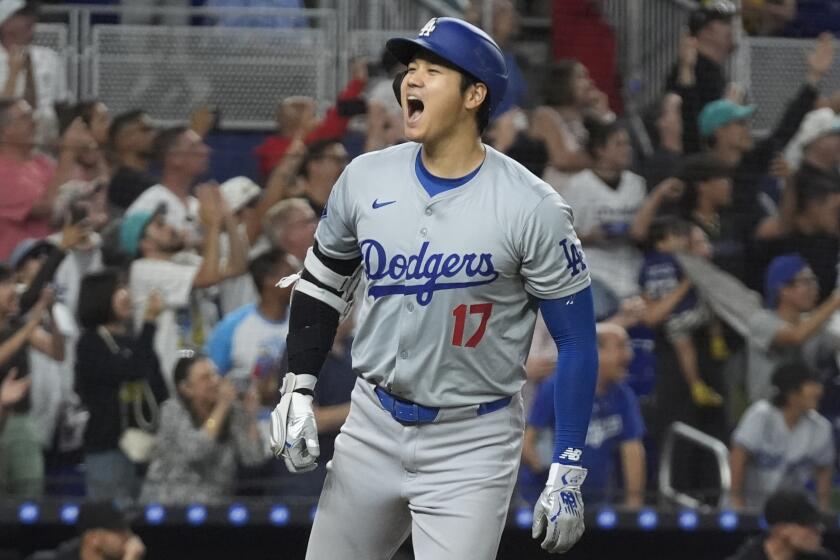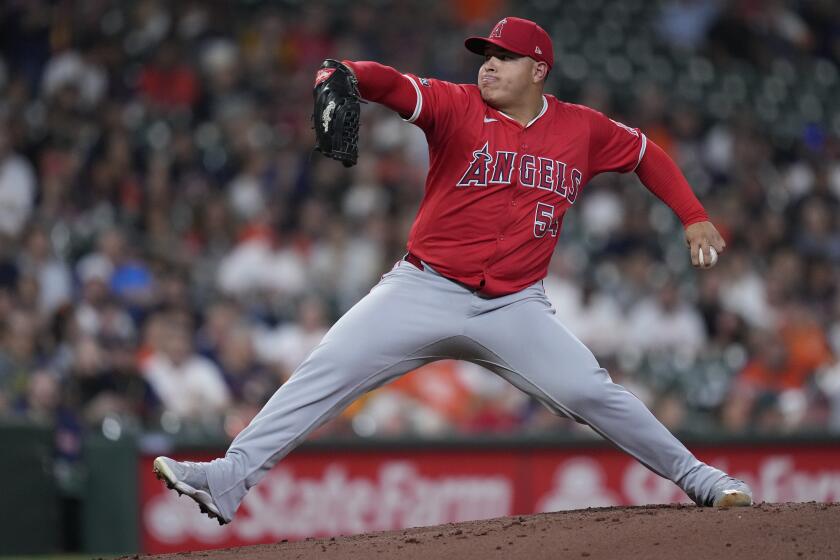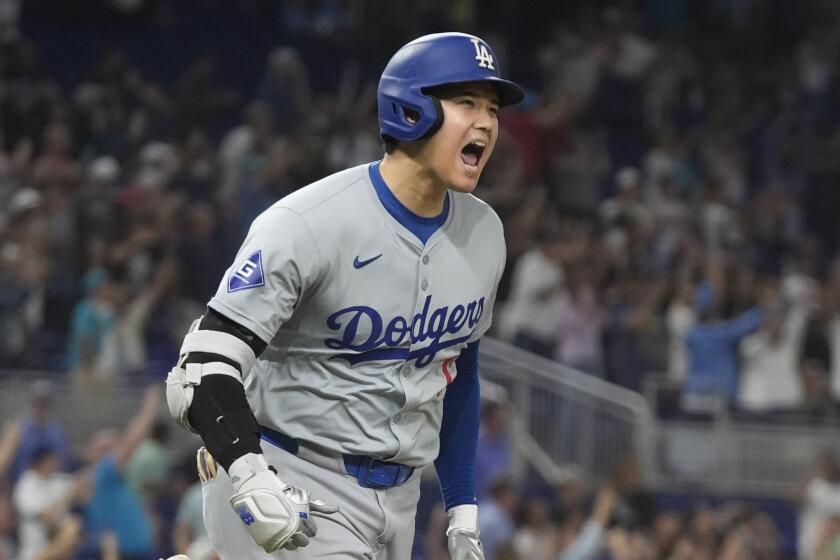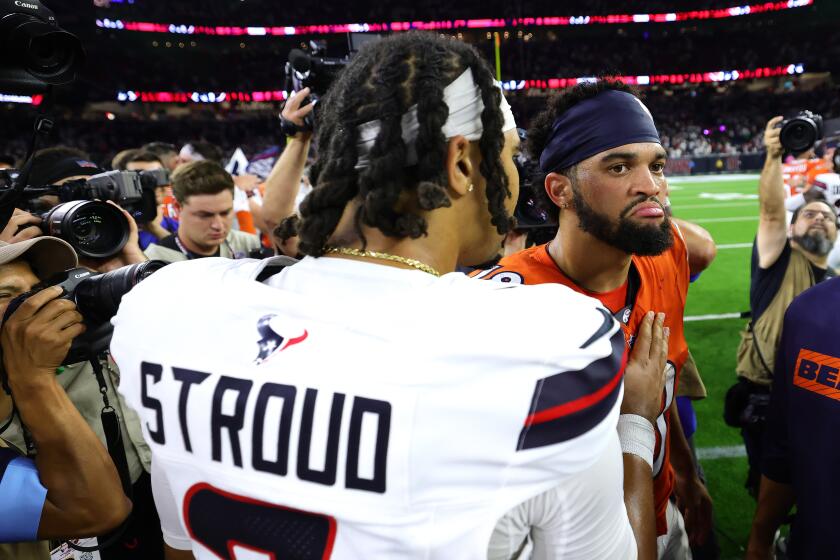Baseball clubs look to improve title chances with trades
Hundreds of front-office executives, managers, coaches and scouts will descend upon San Diego this week for Major League Baseball’s annual winter meetings, all with the singular purpose of molding their teams into World Series contenders.
But what does a championship-caliber club look like? Most people would list a strong rotation that consistently pitches deep into games, a versatile and reliable bullpen, a lineup that scores enough to support its pitching and a solid defense as key ingredients.
Not all the elements are needed to win, though. The 2012 San Francisco Giants and 2014 Kansas City Royals had little power, each finishing last in their league in home runs, yet both got to the World Series. The 2012 Detroit Tigers reached the World Series with a shaky bullpen and subpar defense.
And regular-season performance is not always an indicator of October success. The 2013 Boston bullpen ranked 10th in the American League in earned-run average (3.70), 12th in opponents batting average (.250) and had 24 blown saves, third-most in the league.
But Red Sox relievers, led by Koji Uehara and Junichi Tazawa, applied an October clampdown, going 4-2 with a 1.28 ERA, converting seven of nine in save opportunities and limiting opponents to a .207 average in 49 1/3 innings to help Boston win the championship.
A regular-season analysis of seven key components of teams that played in the last five World Series showed that the most common thread among the clubs was an ability to hit in the clutch.
Five of 10 teams rated excellent in that category, with the 2011 St. Louis Cardinals and Texas Rangers, the 2012 Tigers and 2013 Cardinals leading their leagues in average with runners in scoring position. The two Cardinals teams were off-the-charts good, batting .290 with runners in scoring position in 2011 and .330 in 2013, 59 points higher than second-ranked Colorado (.271) in the National League.
The outlier was the 2010 Giants, who ranked last in the NL with a .248 average with runners in scoring position and fared marginally better in October (.267) but rode one of baseball’s best rotations and a stellar bullpen to the title.
Speed and defense appeared less important. Four clubs — the 2010 Giants, the 2011 and 2013 Cardinals and the 2014 Giants — ranked last in the NL in stolen bases, and the 2012 Tigers ranked 13th in the AL. Seven of the 10 World Series teams rated average or below average defensively.
One glaring exception was the 2014 Royals, who used their superb speed — who can forget their seven stolen bases in a 9-8, 12-inning come-from-behind wild-card victory over Oakland? — and superior defense to back strong pitching during an October run that fell one victory short of a World Series title.
One of Angels Manager Mike Scioscia’s most common refrains is that starting pitching is “the heartbeat of any championship-caliber club,” and he’s right.
All 10 World Series rotations rated average to excellent, with the 2010 Giants (Matt Cain, Tim Lincecum, Jonathan Sanchez, Barry Zito), 2012 Tigers (Justin Verlander, Max Scherzer, Rick Porcello, Doug Fister) and 2013 Cardinals (Adam Wainwright, Shelby Miller, Lance Lynn, Joe Kelly) standing out.
The 2014 Giants may have had the least impressive regular-season rotation of the bunch, their starters going 56-60 with a 3.74 ERA, 10th-best in the NL. But left-hander Madison Bumgarner (18-10, 2.98 ERA in the regular season) carried the Giants through October, going 4-1 with a 1.03 ERA and two shutouts in 52 2/3 innings spanning seven playoff games.
Asked to identify trends among recent World Series participants, Angels General Manager Jerry Dipoto said teams have “been geared a little bit more toward the bullpen and the ability to shorten the game.”
That was certainly true in October, when Kansas City leaned heavily on relievers Kelvin Herrera, Wade Davis and Greg Holland, and San Francisco’s deep bullpen, led by Santiago Casilla, Sergio Romo, Jeremy Affeldt, chewed up innings in relief of struggling starters.
But six teams actually reached the World Series with average to below-average regular-season bullpens. The 2013 Red Sox and 2011 Cardinals relievers stepped up considerably in October.
Five teams rated excellent and three rated strongly in hitting for average, and power was a staple of most World Series clubs until this season.
“One year it’s going to be a team geared toward pitching and defense, another year it’s going to be a team that keeps the lineup moving,” Dipoto said. “You don’t really see many teams that out-bop their opponents in the postseason. That’s a little bit outdated.”
General Managers spend the off-season trying to build a team that can survive the grueling six-month regular season, while many moves around the July 31 trade deadline, such as the acquisitions of Jon Lester by Oakland and David Price by Detroit last summer, are made in hopes of turning a playoff team into a championship team.
Once October hits, the hottest teams, not the best ones — as the 2014 Angels and Washington Nationals, who had the best records in their leagues and combined for one division series victory, can attest — go the farthest.
A dominant ace such as Bumgarner can carry a club. So can an emotional, confidence-boosting, playoff-opening victory as the Royals had over Oakland.
Trade-deadline additions, such as Cliff Lee to Texas in 2010 and Hunter Pence to San Francisco in 2012, can boost clubs, as can the late-season emergence of young stars such as Trevor Rosenthal, the hard-throwing reliever who replaced Edward Mujica as the Cardinals closer late in 2013.
There are so many intangibles — which teams and players thrive more amid playoff pressure; which managers best deploy their resources and best handle their bullpens (think the Giants’ Bruce Bochy); which hitters come through in the clutch; which defenders make game-altering plays.
“As a general rule,” Dipoto said, “the lineup that has multiple ways to beat you, that has an element of power, on-base ability, can run the bases and steal a few bases, is going to win the day.”
More to Read
Go beyond the scoreboard
Get the latest on L.A.'s teams in the daily Sports Report newsletter.
You may occasionally receive promotional content from the Los Angeles Times.











